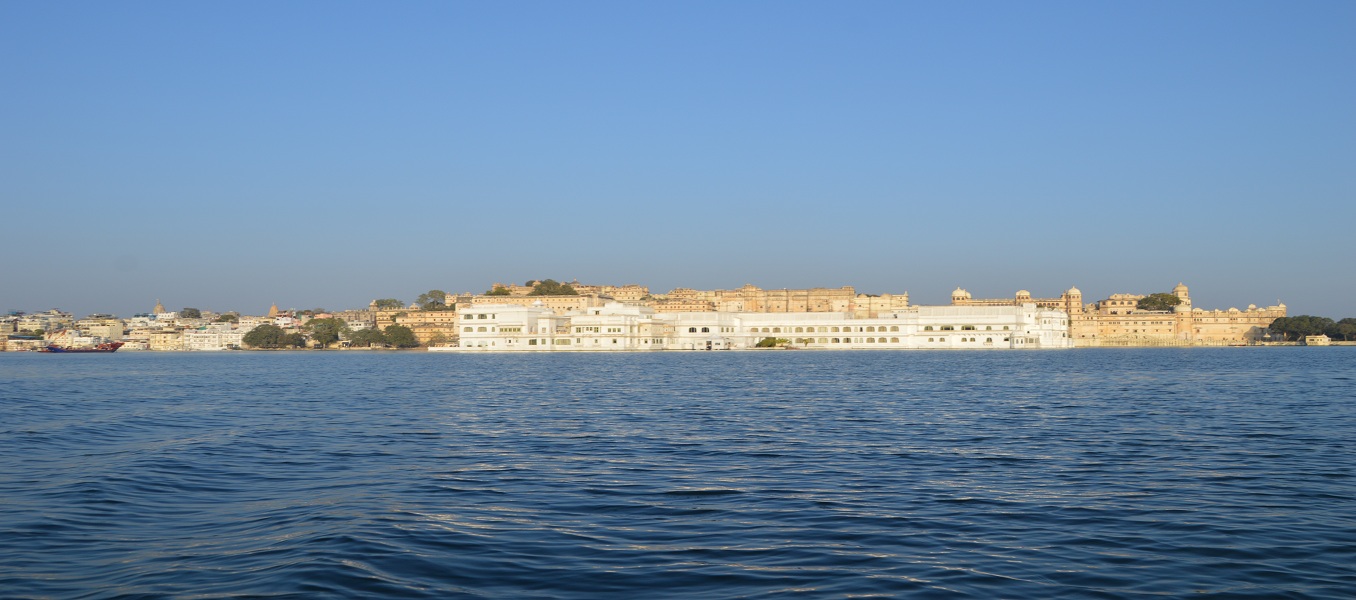Blue City Jodhpur
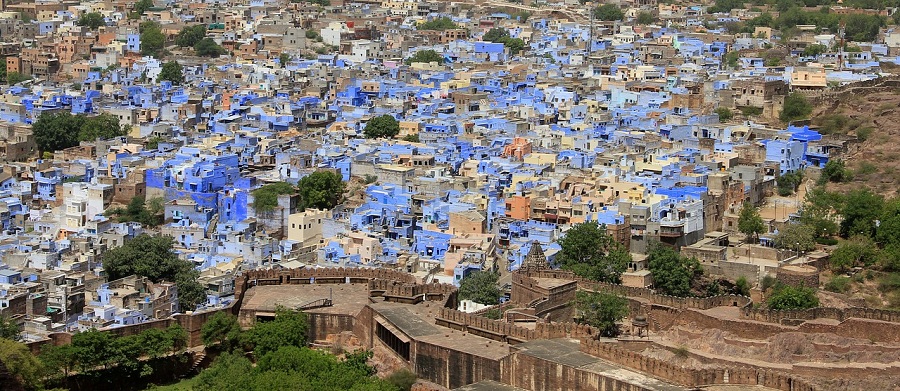
Jodhpur
‘Zigzag roads from every direction take you 125 metres up to Mehrangarh Fort for gorgeous views overlooking the brilliant blue city of Jodhpur. The museum in the fort includes a collection of costumes and miniature paintings, and love the intricate carvings and the decorated period rooms, mixing Indian style over the centuries with relics from all over the world.
Get out of the midday sun with a stop at Shri Mishrilal hotel for refreshments. This little place – which is actually a restaurant, rather than a hotel, despite the name – is famous for its makhaniya lassi – a fragrant, tangy, rich and refreshing drink made from buttermilk, nuts, saffron, cardamom, fragrant oils and topped up with an extra serving of whipped butter. A kachori – a fried snack filled with chilli-spiced mung beans, which is more popular than a samosa in the Rajasthan area – makes the perfect supplement
Pyau

A Charity Drink
The word piyau meaning the drink, symbolizes the different stations for drinking water. These piyau’s can be found at the side of the roads, providing travellers with a drink of water. Every piyau in India has its own different story. Since a very long time these piyau have been providing drinking water free of cost.
The sizes and materials used for making these structures differ from place to place
The water is sometimes filled in clay pots called “matka” , which helps in keeping the water cool and fresh. Use of such matka has been existing from a long time in India.
Some pyau’s are installed by the government while some our given on donations by the big wealthy families for charity. Many piyau are constructed as the memorial of one’s near and dear ones.
The pyau system in India offers water to all living beings without discrimination of any kind. It ensures that every person’s thirst of water is fulfilled.
During summers when the temperature rises to great extent, a pyau provides the travellers and workers with a sight of relief.
These pyau are a mark of identity of our culture and tradition. Our values and morals are rooted with the practice of offering water to people.
Puppet Making
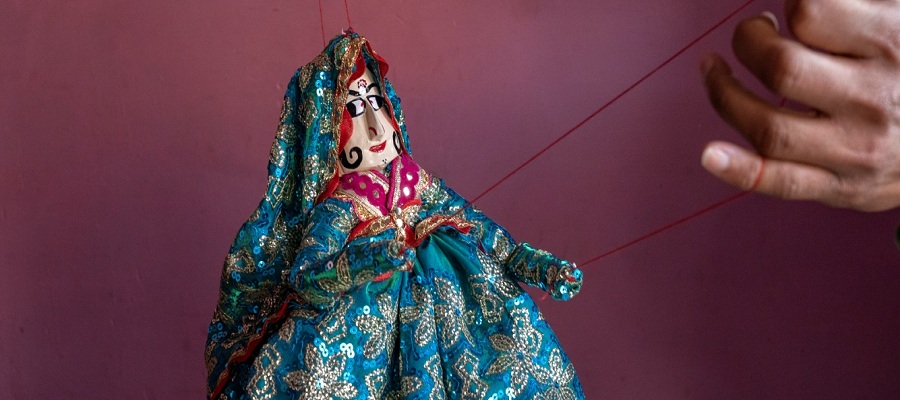
Puppet
One finds its reference in Rajasthani folk tales, ballads and sometimes even in folk songs. Similar puppets which are rod-puppets, are also found in west Bengal. But it is truly fromrajasthan’s amazing kathputlitradition which made India one of the first countries to invent its traditional puppetry.
It is believed that somewhere 1500 years ago, tribal Rajasthani Bhat community started the use of Kathputli as string marionette art and it is in their love for tradition that art of Kathputli survived the test of time. Tribes of Rajasthan have been performing this art from the ancient times and it has become an eternal part of Rajasthani culture and tradition. No village fair, no religious festival and no social gathering in Rajasthan were completed without the Kathputli show. Tradition of Kathputli is based on folk tales and stories. Scholars believe that folk tales convey the lifestyle of ancient Rajasthani tribal people and Kathputli art might have originated from present day Nagaur and surrounding areas.
Last Ritual

Pyres
When you step off a wooden boat onto the banks of the burning ghat in the oldest city of India and you knit through a jumble of funeral pyres mocking, scorching, and spitting orange coals into an dark night and you feel the bang of bells vibrating inside your chest and a wave of oven-like heat consuming everything in its reach, you realize how detached you truly are from the ritual of death.
The burning ghat in Varanasi, India’s oldest city, glows as burning pyres continue throughout the night.
when one step on Varanasi’s famous cremation ghat, which runs 24/7, burning hundreds of bodies a day in plain sight, it begun how physically distant most of us are from the departed. In the West, the dead are typically hidden—taken away—either to be beautified for a funeral or to be cremated, depending on beliefs. Either way, bodies are rarely seen again. Some might argue it is civilized, cleaner, or perhaps just emotionally easier. Or maybe it is the modern world’s subtle way of hiding from the inevitable.
Holy Dip
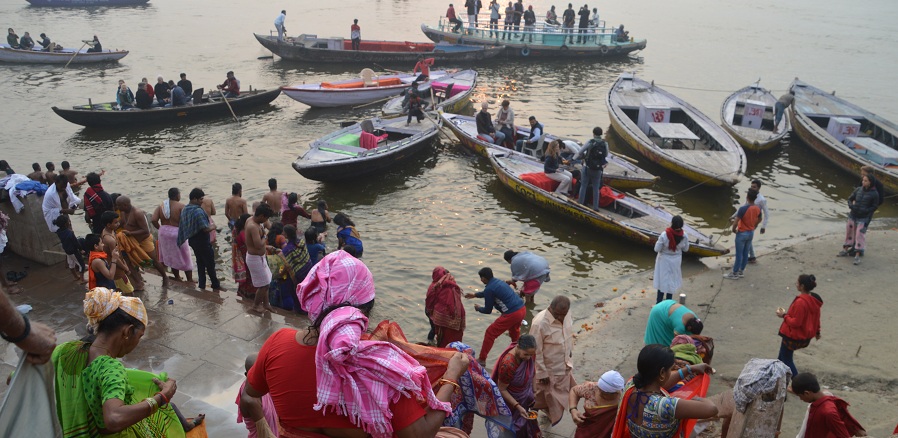
River Ganga
Indians are religious and God fearing people. We in our normal routine life engage in lot of religious act like visiting the temple, feeding the cow or watering the holy Tulsi (Basil) plant. Apart from upholding the Indian tradition, our piety could be love towards God, fear, a mix of both or ways of creating bond with almighty God or simply a way of communication with Him. While there are varied religious activities which Indians indulge in, perhaps the one considered most holy and sacred is taking a dip in the waters of holy rivers. We believe that taking a dip in the sacred rivers would free our souls from the accumulated sins and can release us from the wrench of life.
Kalbeliya Dance

Kalbeliya Dance
The traditional dances lay emphasis on the cultural roots of some communities. Such is the kalbelia dance of Rajasthan.
Kalbeliya is a tribe from Rajasthan, India. Traditionally, kalbelia men were associated with handling snakes and the women section used to dance and sing door to door.
In 1972 with the enactment of the wildlife act, the kalbelia’s were pushed out of their traditional practice of snake handling and now performing arts is a major source of income for them. The kalbelia dance is an integral part of kalebia culture. The dances and songs of this community represent the creative adaptation of this community of snake charmers to changing Socioeconomic conditions.
The women of this community dance and swirl, replicating the movements of a serpent with wearing a set of traditional clothes called Angrakhi, Odhani and Lehenga.
The male participants are engaged in playing musical instruments. A famous instrument used is a Pungi, a woodwind instrument traditionally played to capture snakes.
The dancers wear jewellery and garments richly embroided with small mirrors. Kalbelia songs are based on stories taken from folklore and mythology.
These performances are part of an oral tradition passed on from generation to generation. The kalbelia folk songs and dances of Rajasthan have been declared as a part of its intangible heritage by UNESCO.
We encourage and organise tours to these communities helping them sustain this tradition by showcasing their remarkable talents.
Red Chilli From Mathania
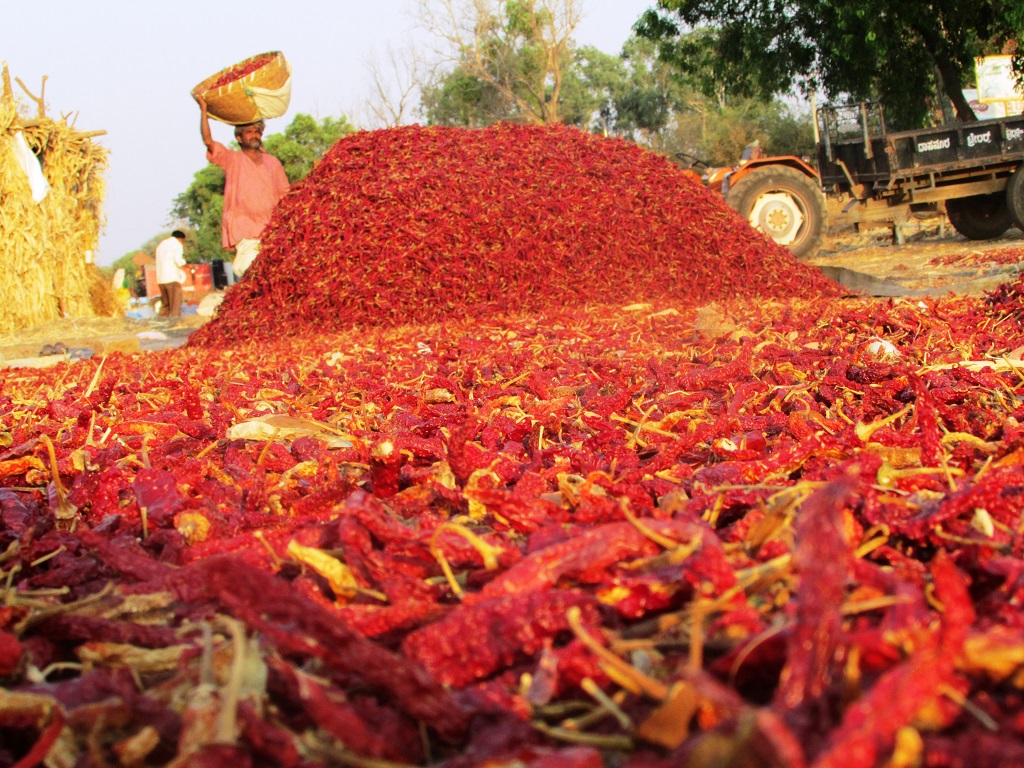
Red Chilli
India , a vast land rich in culinary traditions is also referred as the ‘Heaven of spices’.
Every region of this country has distinct food culture, each unique in its own way.
Mathania is a town near Jodhpur , Rajasthan famous for the special red chillies known as ‘Mathania Mirch’.
Unique in its taste and as red as blood in colour , this chilli is the key ingredient for many dishes in Rajasthan. It brings distinct flavour ,colour and taste to the food.
The origin of Mathania Mirch lies outside the country. Chilies were brought in India along with Portuguese in 16th century.
King of a royal family obtained the seeds of Mathania chilli from a historical conquest and distributed the seeds among the farmers. They started to grow these chillies in the Marwar Region. Traditional dishes centred around this chilli are laal maas , Kair-sangri.
Today, the local families in the region work on the harvesting drying and grinding of the chillies. Over the last two centuries traders from Marwar have been supplying Mathania’s Unique Chilly to different parts of country.
Textiles of Rajasthan

Rajasthan
The fabrics of Rajasthan reflect a mixture of radiant colours and royal traditions.
This tradition of weaving fabrics with excellent and admirable techniques have been passed on from generation to generation in the state.
Bandhani, a fabric made by “tie & dye” process is created by plucking the cloth with fingernails. The colours used in the tie and dye process are natural colours, mostly yellow, red, blue and green.
Sanganer, a place near Jaipur in Rajasthan is a major centre of producing the famous block printing fabrics. From the 16th century , the Sanganeri block printing has gained high popularity.
The simple and innovative style of block printing makes this fabric highly used among women of Rajasthan.
Kota Doria fabric originated in Mysore and was brought to Kota in Rajasthan in the 17th century. This fabric was highly favored by the royal families of Rajasthan due to its grace.
These textiles are generally manufactured by local communities.
With the rise in machine work and modern industries, the handlooms of these fabrics have seen a considerable downfall.
These fabrics preserve and sustain the real culture of Rajasthan’s textiles and represent the handicraft skills passed on from generations.
We at Asia experience make more and more people to visit such local communities in small villages and promote the concept of shop local, helping them sustain their work rich with culture and tradition. It is always an interactive and illuminating experience to spend time with these local craftspersons.
A Traditional Delicacy

A Traditional Delicacy
The mouth watering combination of daal baati churma originated from the desert kingdom of Mewar. Back then the warriors preffered baati as a perfect war time meal. It is said that the soldiers would break the dough into small balls and Burry them under the layers of sand to be baked under the heat.
With the Gupta empire settling in Mewar, the combination of daal and baati was introduced. Pamchmel daal, a mixture of five lentils was the favorite of the Royal Court.
Churma is a sweet dish which was introduced when a cook accidently poured some sugarcane juice on the baatis which made them softer and gave a sweetened taste.
This traditional delicacy is the most famous dish of Rajasthan commonly served in religious occasions, weddings and many other festivities.
This is often eaten with pure ghee making it distinctively flavoured.
Each local dynasty has been adding their own twists to this delicious trio, but the basic preparation remains the same since ages.
A restaurant in Jaipur named Spice Court offers a heavenly experience with delicious baati stuffed with keema – minced meat used in various dishes.
Chulha System
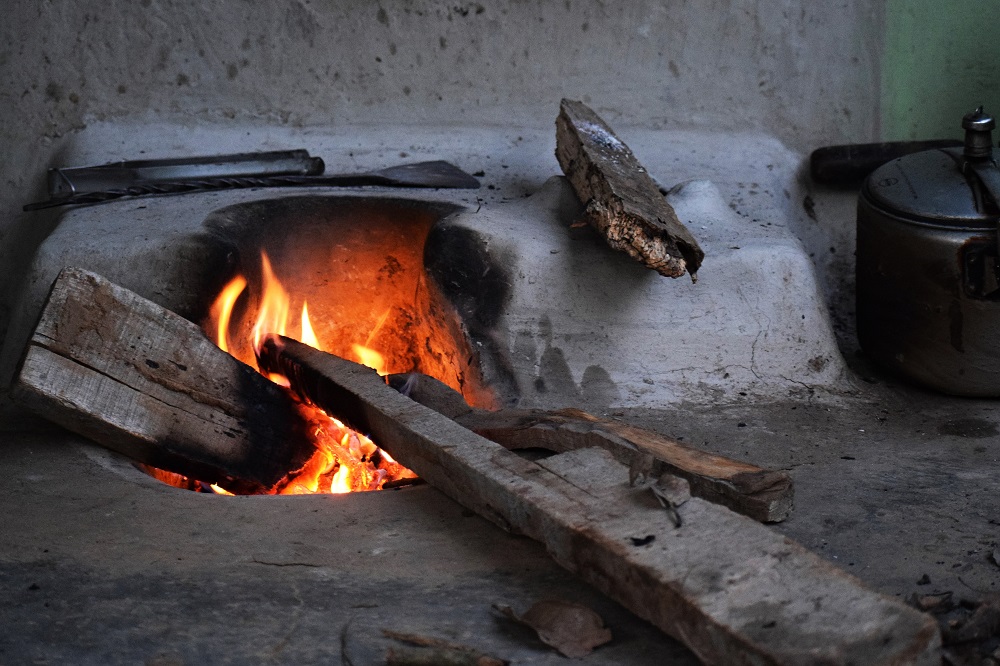
Chulha System
The rural India has always been a region promoting homemade and eco-friendly objects since a long time.
A homemade drive made up of clay or mud is used for cooking in almost everything. This stove is called a “chulha”.
Use of this chulha is a still a tradition in many parts of rural India.
The Indian chulha requires a person to flame it by blowing air continuously through a pipe. The food cooked in mud chulha is rich in nutrients as the flame of a chulha is not harsh as the flame on a gas stove, owing to the fact that the food doesn’t loose it’s natural moisture and nutritional value.
The food cooked in a chulha has a unique smokey flavor , enhancing the taste. Many people in the rural parts of northern India prefer chulha over gas stoves as it is believed that the use of mud chulha helps in purifying the air and keeps mosquitoes and insects away.
The fuel for heating a chulha is mostly wood and sometimes cow dung cakes too. Use of these objects is natural and sustainable.
Animal Shelter
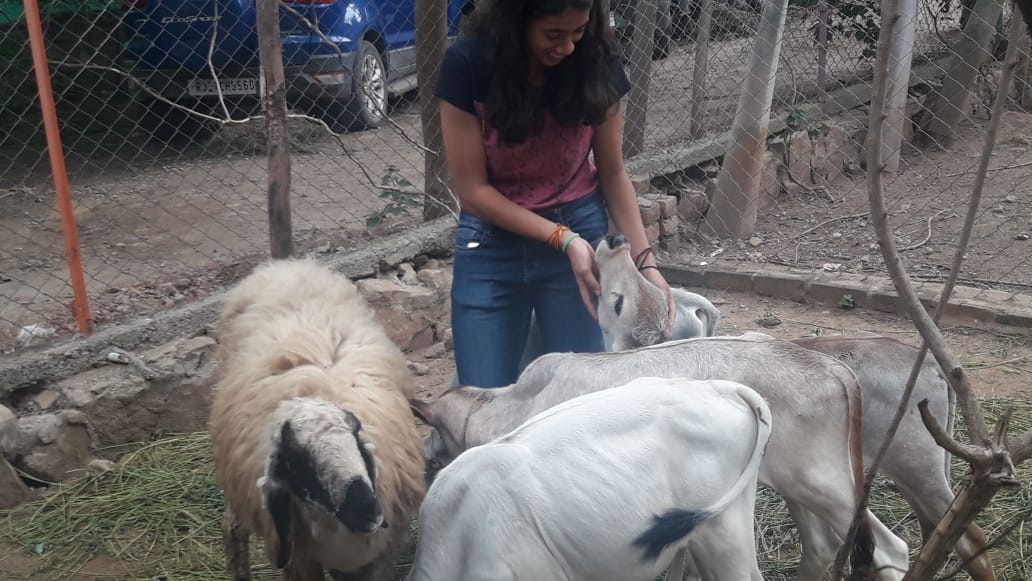
If we don't care , then who will?
It is always exciting and rejuvenating to spend time with animals.
In India it is in our culture to help the voiceless animals and maintain a peaceful and happy environment for them.
We believe all animals deserve our compassion and protection.
Animal Shelters in India play a vital role, continuously working to provide Shelters to the animals in need.
The wagging tails bring smile to one’s face and warmness to the heart.
Volunteers enable such shelters to provide best care to most animals.
Animal Aid Unlimited , an animal shelter in Udaipur aims to rescue and treat
un-owned street animals who have become ill or injured.
Volunteers from around the world help to make Animal Aid a beautiful melting pot of diversity and Inclusion for all.
It provides a sense of comfort to the animals when fed and brushed from the humans.
It is remarkable experience to volunteer in this organisation helping to save lives.
Animals Aid Unlimited welcomes you to volunteer and play a special role in welfare of the animals.

